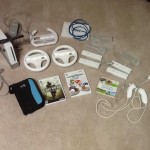Light to moderate rain is falling in western Iowa, causing slick conditions on some of Iowa’s roadways. A few crashes have started popping up on Interstate 29, I-80 and other major roads in the area. Iowa Department of Transportation officials are urging motorists to evaluate the necessity of each trip during poor winter driving conditions, and monitor weather forecasts and road condition reports before heading out on the roads. Log on to http://511ia.org/ for the latest road conditions.
If you are driving:
•Focus your attention on the driving task and slow down.
•Do not use cruise control.
•Put your mobile phone away so you are not tempted to talk or text while driving.
•Keep a safe distance from vehicles in adjacent lanes as strong wind gusts could
push a vehicle outside its lane of travel.
•Put a safe distance between your vehicle, and the vehicle ahead in case sudden
driving maneuvers are necessary.
•Take extra care if driving a high-profile vehicle such as a truck, van, or sports
utility vehicle, or when towing a trailer, as these vehicles are more prone to be
pushed or even flipped by wind gusts.
•Your vehicle’s headlights are a valuable asset when driving in winter weather. Turn
them on to see and be seen.
•If conditions are severe enough to prevent safe driving, postpone your trip; or if
en route, identify the nearest safe place to pull off the roadway, such as a rest
area, truck stop, motel, or other traveler service until the wind subsides and road
conditions improve.
•Keep your windshield clear of ice.
•Allow extra travel time.
When the roads are icy
•If your vehicle begins to slide, take your foot off the gas pedal and shift into
neutral, or if you have a manual transmission, depress the clutch. While it may be a
natural instinct to slam on your brakes, this may cause your vehicle to slide
further and result in loss of vehicle control. Tap the brake pedal lightly.
•If you have an idea that there may be ice ahead (if you see vehicles ahead of you
sliding, for example), downshift to a lower gear before you come onto the ice. The
lower gear will force you to drive more slowly and give you better control of your
vehicle.
•If your vehicle does begin to skid on the ice, turn the wheel in the direction of
the skid. This should help to steer your vehicle back on the right track.
•Stay well behind the vehicle in front of you – this is definitely not the time to
tailgate. Even if you feel confident that you know how to drive safely on ice, that
does not mean the driver in front of you does. Be prepared in case other vehicles
start to slide.
•Do not think you are invincible just because you drive a four-wheel drive truck or
sports utility vehicle. Four-wheel drive vehicles have no advantage over other
vehicles when it comes to driving on ice.
•Make sure you and your passengers are wearing their seat belts or other safety
restraints.
Winter driving is always unpredictable, so be prepared for the unexpected.






